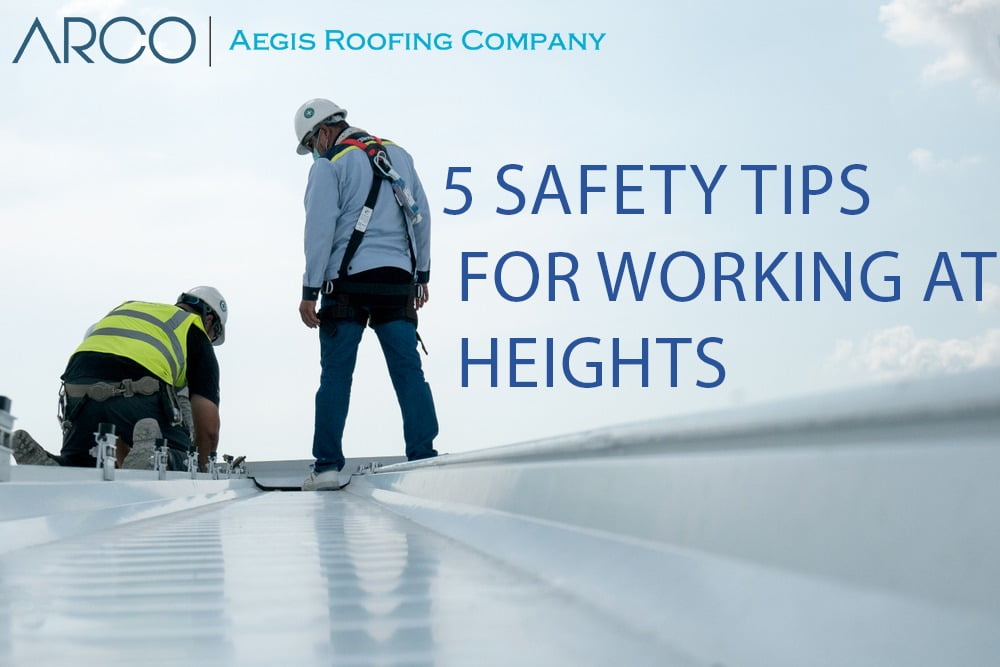Working At Heights? Safety Tips To Adhere By
Working safely at heights takes preparation, education, and determination. Safety focus while working at heights, like roofs is of utmost importance. It takes one mistake to cause a very unfortunate accident. You must be prepared to protect your employees each and every time they could be exposed. Here are some tips to consider if your employees work at heights:
1. Opt for Proper PPE
Always use properly chosen Personal Fall Arrest Systems (PFAS). All full body harnesses that meet ANSI standards will perform great, but try always not to go with the cheaper options as they may lack in it’s functionality that you’re getting or sacrificing, such as extra D-rings, fireproof material or arc-safe design. Sometimes, a more expensive harness is more expensive simply because it’s been made to be more comfortable. Do your research and decide what you really need. If you have workers welding at heights, then a standard nylon harness is probably not going to be what you need. Harnesses are not one-size-fits-all. Make sure your workers can properly adjust their harnesses so that they fit correctly.
Another example is the lanyard with a deceleration device will not protect your worker. Instead, a retractable lanyard may be necessary. Each situation is different, so you need to evaluate your working conditions and the task to be performed in order to give your employees something that will actually protect them.
2. PPE Equipment inspection
Equipment that is not inspected before use can fail. harnesses and lanyards need to be periodically inspected by a safety officer with knowledge and competence., they should also be inspected by the user prior to every use. In order for this to happen, your users need to understand what they’re looking for, what is acceptable and what is not, and what to do when they find a problem.
3. Know and follow Roofing and heights regulations
contractors working on roofs who are not roofers believe that certain methods of fall protection apply to all site types, buildings or regions.
Government (civil defense) issued regulations are there for a reason, and each site project must be aware of and adhere to these regulations. Not to mention that not adhering to such regulations can lead to fines by monitoring bodies, and much worse an accident.
4. Clean and clear the work area.
The immediate area around the working site must be kept clear from all debris and objects. Minimizing the risk of slipping or tripping is of utmost importance. Clearing things aways as work progresses is task that should be part of the routine.
5. Training, and training, and more training.
If you want your employees to work safely at heights, they must be properly trained. Not only is training required by law, there is just too much room for error and confusion when it comes to a person without the proper knowledge trying to protect themselves at heights. Falls are the leading killer in construction year after year. Many people in other industries die from falls as well, so they are very deadly. Most of the time, there are no do-overs. Arm your employees with the knowledge they need to keep themselves safe.
